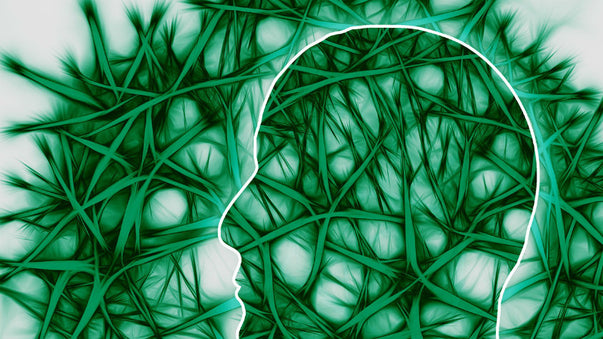Therapeutic Strategies for Motivation

There is no question that motivation is one of the hardest and yet important factors in life, notes a press release issued by Ecole Polytechnique Fédérale de Lausanne (EPFL). "It's the difference between success and failure, goal-setting and aimlessness, well-being and unhappiness. And yet, why is it so hard to get motivated - or even if we do, to keep it up?"
EPFL neuroscientists have advanced toward answering this question (see below). The findings provide novel insights in the field of motivation neuroscience," said research co-leader Carmen Sandi.
"They show that the balance between glutamine and glutamate can help predict specific, computational components of motivated performance. Our approach and data can also help us develop therapeutic strategies, including nutritional interventions, that address deficits in effort engagement by targeting metabolism."
I am persuaded that lack of sustained motivation is a curse. And I would certainly welcome new light therapeutic options, such as nootropics. See Thrivous Nootropic Stack.
Neurotransmitters Are Key to Motivation
Neuroscientists at Ecole Polytechnique Fédérale de Lausanne (EPFL) have discovered that the key to motivation and sustained performance lies within the ratio of two neurotransmitters in the brain: glutamine and glutamate.
A study was published in Neuropsychopharmacology. It indicates that the balance of glutamine and glutamate in a region of the brain sitting close to the bottom of brain, called “nucleus accumbens,” relates to our capacity for maintaining performance over a long period of time. Researchers cal this "stamina."
Nanotubes Allow Retinal Cells to Communicate
Researchers at University of Montreal have discovered a previously unknown mechanism of blood redistribution. It is essential for the proper functioning of the adult retina.
A paper was published in Nature. It identifies a communication structure between cells that is required to coordinate blood supply in the living retina.
Pericytes are cells that have the ability to control the amount of blood passing through a single capillary. Using a microscopy technique to visualize vascular changes in living mice, the researchers showed that pericytes project very thin nanotubes. The inter-pericyte tunnelling nanotubes enable communication with other pericytes located in distant capillaries. Through these nanotubes, the pericytes can talk to each other and deliver blood where it is most needed.
Inhalable Protection Against COVID-19
Scientists at UC San Francisco have devised a new approach to halting the spread of SARS-CoV-2. This is the virus that causes COVID-19.
A research preprint was published in bioRxiv. It reports that the scientists engineered a completely synthetic, production-ready molecule that straitjackets the crucial SARS-CoV-2 machinery that allows the virus to infect our cells.
The scientists tested an aerosol formulation, dubbed "AeroNabs,” which could be self-administered with a nasal spray or inhaler. Used once a day, AeroNabs could provide powerful, reliable protection against SARS-CoV-2 until a vaccine becomes available.
Memory in Older People May Be Different
Scientists at Washington University have found that brain activity in older adults isn't necessarily quieter when it comes to memory, but just different.
A study was published in Nature Communications. It indicates that certain areas of the brain, implicated in broad, schematic knowledge, are especially active in older adults.
In practice, this suggests that younger people might be more focused on the specifics of a situation. And older people might pay more attention to the broader picture.
Cancer Immunotherapy Boosted in Mice
In a mouse study, researchers at Washington University have found that an antibody that targets a protein called TREM2 empowers tumor-destroying immune cells. And it improves the effectiveness of cancer immunotherapy.
The researchers injected cancerous cells into mice. All of the mice that were then treated with the antibody combined with an immunotherapy agent rejected the tumors completely.
The findings were published in Cell. They point to a potential new way to unlock the power of immunotherapy for more cancer patients.
Robust Stability Is Built Into Neural Circuits
MIT neuroscientists have developed a new theoretical framework showing that many properties of neural connections help biological circuits produce consistent computations.
A research paper was published in PLOS Computational Biology. In it, the neuroscientists describe an inclination toward robust stability that is built in neural circuits by virtue of the connections or synapses that neurons make with each other.
Networks of neurons involved in the same computation will repeatedly converge toward the same patterns of electrical activity. This happens even if they are sometimes arbitrarily perturbed by neural noise or external stimuli.
More Articles
Don't miss a beat! In our Pulse Newsletter, Thrivous curates the most important news on health science and human enhancement, so you can stay informed without wasting time on hype and trivia. It's part of the free Thrivous newsletter. Subscribe now to receive email about human enhancement, nootropics, and geroprotectors, as well as company news and deals.
Read more articles at Thrivous, the human enhancement company. You can browse recent articles in Thrivous Views. See other Pulse Newsletter articles. Or check out an article below.
-
The Fusion of Electronics and the Human Body
Scientists are taking steps toward integrating electronics with the body. Such devices could monitor for tumor development or stand in ...
-
What Is Vitamin B Complex Good For?
B Vitamins are necessary for a healthy life. Each vitamin plays an important role in development and maintenance of the ...



